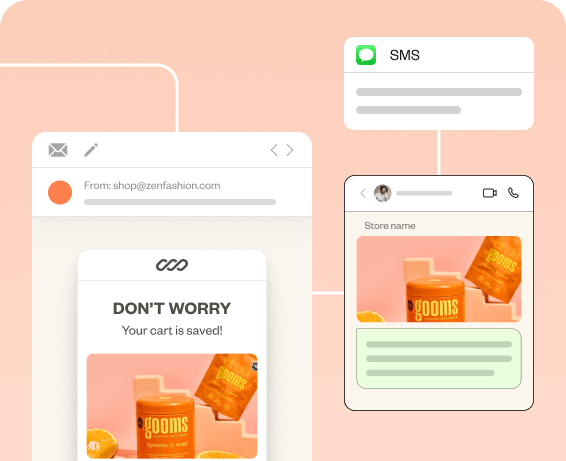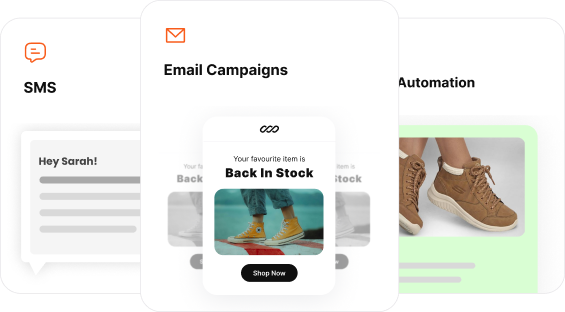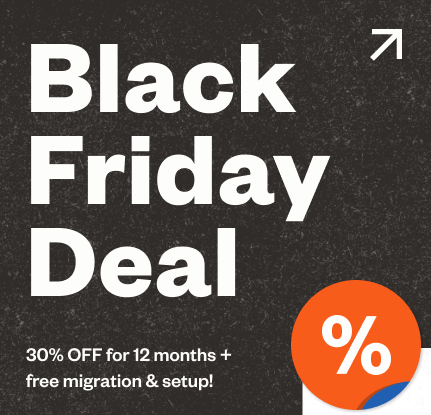Is your marketing budget spread thin across disconnected channels, missing out on crucial customer touchpoints and hidden ROI?
An Omnichannel Marketing campaign sees a 287% higher purchase rate compared to single-channel campaigns. It’s one of the many leverages omnichannel marketing offers to businesses.
A good omnichannel marketing example will let you know how to provide a cohesive brand experience and maximize sales.
To name a few, an omnichannel marketing example can show you:
- How to leverage multiple marketing channels
- Maximize your ROI on marketing spends
- Brand building and maintaining brand consistency
- Create a seamless customer journey
- Efficient Handoffs Between Channels (Emails, SMS, social media, AI chatbots, in-store marketing, flyers, calls …)
In this article, we’ve handpicked 5 real brands omnichannel marketing examples and deciphered how they’ve implemented it.
Start your Omnichannel journey and increase your purchase rate by 287% with Retainful’s easy-to-set-up email, SMS, and WhatsApp campaigns.
What is Omnichannel Marketing?
Omnichannel marketing is a customer-centric approach that provides a seamless and personalized brand experience and message across all marketing channels. (i.e.) A personalized brand message and experience in prints, emails, SMS, social media, website, app, and in-store.
5 Omnichannel Marketing Examples: In Depth Analysis and Implementation
Understanding omnichannel marketing is one thing; seeing it in action is another. After studying multiple brand’s marketing methods, we’ve handpicked 5 omnichannel marketing examples that have manifold their revenue.
Here are the top 5 omnichannel marketing examples
Create an Omnichannel brand experience effortlessly with Retainful’s pre-built multichannel automation workflows.
1. McDonald’s – MyMcDonald’s Rewards program powers $30 billion in Omnichannel sales
McDonald’s has moved from a traditional fast-food model into a perfect omnichannel marketing example through digitalization.
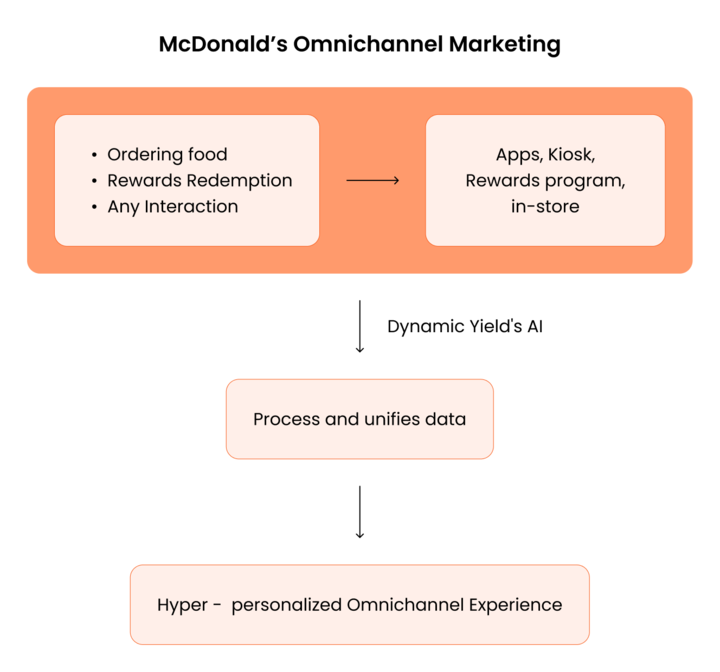
The core channels of McDonald’s omnichannel marketing strategy are:
- MyMcDonald’s Rewards – The pillar of McDonald’s omnichannel marketing
- Mobile App
- In-Restaurant Digitalization
- Delivery Integration
- Consistent Brand Voice
MyMcDonald’s Rewards (The Central Hub): It allows customers to earn and redeem points irrespective of where they order from. (mobile app, in-store kiosks, drive-thru, or directly at the counter). All these activities are unified under a single customer profile.
Mobile App: The app serves as the primary digital touchpoint. It enables personalization of offers driven by AI based on past purchases.
In-Restaurant Digitalization: Self-ordering kiosks and dynamic digital menu boards in physical locations are integrated with the loyalty program. The result is a consistent ordering experience and allows personalized suggestions based on AI.
Delivery Integration: Seamless partnerships with third-party delivery services extend their reach, with efforts to integrate loyalty benefits even into these external channels.
Consistent Brand Voice: Promotions, menu updates, and offers are synchronized across all channels – app, in-store, drive-thru, email, and social media.
2. Duolingo’s Omnichannel marketing strategy engages 100 million learners monthly
Duolingo has created a highly engaging and addictive omnichannel experience. It keeps users consistently engaged across multiple devices and touchpoints. Their success lies in integrating their product, marketing, and user psychology.
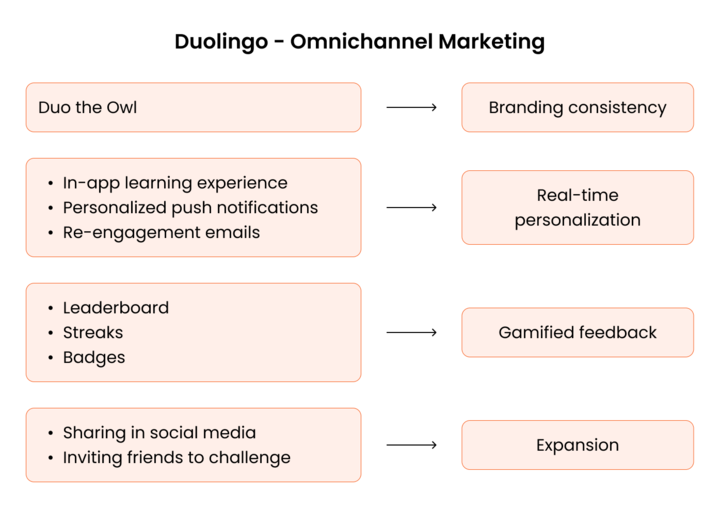
Here’s Duolingo’s omnichannel marketing strategy:
- Duo the Owl: A Mascot in Every Moment: Whether it’s a push‑notification guilt trip, a celebratory email, or an in-app message. Duo shows up. This single brand element anchors every touchpoint so the experience always feels familiar.
- Cross‑Device Sync: Start a Spanish lesson on your phone at breakfast, finish it on your laptop at lunch. All progress, streaks, and achievements sync instantly, eliminating friction and reinforcing the daily‑practice habit.
- Personalized Push Notifications: Duolingo’s push alerts aren’t “one‑size‑fits‑all.” They’re timed to your study pattern and streak status, calling you out the moment motivation dips.
- Branded Reengagement Emails: Every email, whether it’s “You’re on fire! ” or “Your streak is in danger!” comes from Duo. It feels like a friend checking in rather than an automated drip campaign.
- Gamification Everywhere: One Big, Synced Game: Streaks, leaderboards, badges, no matter where you log in, your game stats follow. The result is a single, cohesive brand experience.
- Duolingo English Test (DET) Integration: By integrating a formal certification product into its casual learning app, Duolingo closes the loop. It transitions from skill-building to validation within its omnichannel ecosystem.
- BirdBrain AI: Adaptive Learning at Scale: Duolingo’s proprietary BirdBrain engine crunches hundreds of millions of lesson interactions each day to adjust difficulty in real time.
3. Starbucks (Omnichannel Loyalty program) – 34 Million Loyalty Members Drive Nearly 60% of Sales
Starbucks displays how omnichannel marketing can build deep emotional connections and drive repeat business.
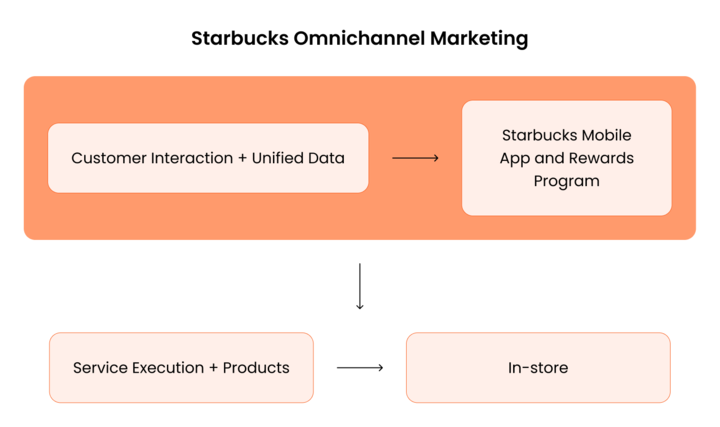
With its Starbucks Rewards program at the center, it links physical stores, mobile apps, and digital communication. The result is a frictionless omnichannel experience that retains loyal customers.
Starbucks as an omnichannel marketing example :
- Starbucks Rewards Program: Customers earn Stars whether they pay via app, card, or even cash as they scan their member barcode. All activity contributes to a single loyalty profile that unlocks rewards and personalized perks.
- The All-in-One Mobile App
Starbucks’ mobile app is central to its success:- Order Ahead & Pay: Skip the line by placing customized orders in advance.
- Digital Card Integration: Load funds, pay, and earn rewards instantly.
- Personalized Offers: Get drink suggestions and offers tailored to your history and behavior.
- Store Locator: Find open stores with up-to-date menus and wait times.
- In-Store Integration: Mobile orders are prioritized. Baristas are trained to recognize loyalty members. Moreover, the in-store ambiance (Wi-Fi, charging outlets, music) aligns with digital convenience.
- Omnichannel Communication: Promotions are consistently delivered via app, email, in-store signage, and social channels. It ensures every message is timely and on-brand.
4. HubSpot: Empowering 247,000+ Businesses with 505% ROI from Omnichannel Tools
Unlike McDonald’s or Starbucks, HubSpot excels as both a practitioner and provider of omnichannel marketing.
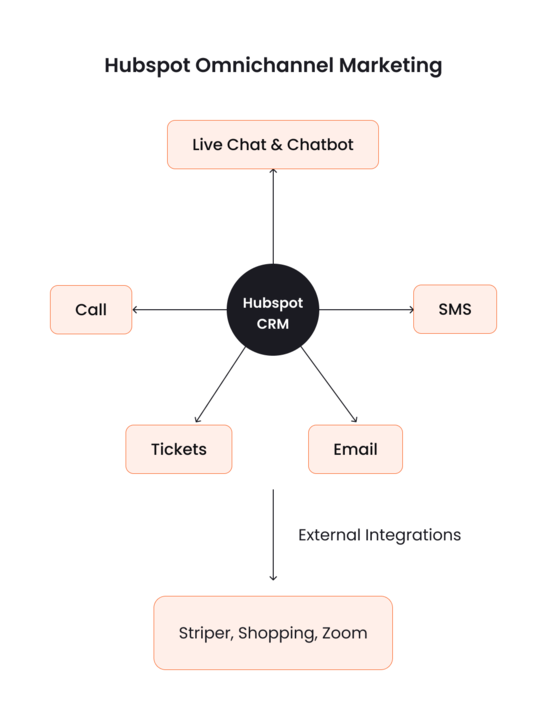
How HubSpot Executes & Enables Omnichannel Strategy:
- Unified CRM as the Omnichannel Backbone: HubSpot’s Smart CRM creates a 360° customer view by consolidating interactions across email, web, ads, social, and support. Every team has full context, enabling cohesive communication.
- Inbound Methodology (Attract -> Engage -> Delight):
- Attract: SEO blogs, targeted ads, and social media campaigns (via Marketing Hub).
- Engage: Email workflows, live chat, and sales outreach (via Sales & Service Hubs).
- Delight: Help desks, knowledge bases, and proactive support (via Service Hub).
- Marketing Automation Across Channels: Triggered workflows based on behavior. (e.g., ebook download -> email follow-up -> sales call prompt, in-app messages, web, and chatbots.)
- Multi-Channel Communication Tools:
- Email & SMS
- Live Chat & Chatbots
- Social Media Management
- Sales Calls & Sequences
- Service Tickets Across Channels
- Robust Analytics & ROI Tracking: HubSpot tracks performance across every touchpoint and channel—providing real-time insights.
- Open Ecosystem (API & App Marketplace): HubSpot integrates with 1,000+ tools (including Shopify, Stripe, and Zoom). It ensures a seamless omnichannel tech stack with centralized data flow.
5. Walmart’s Omnichannel Strategy fuels 22% increase in global e-commerce sales
Walmart has used its extensive store network to its advantage, turning physical locations into a robust omnichannel retail experience.
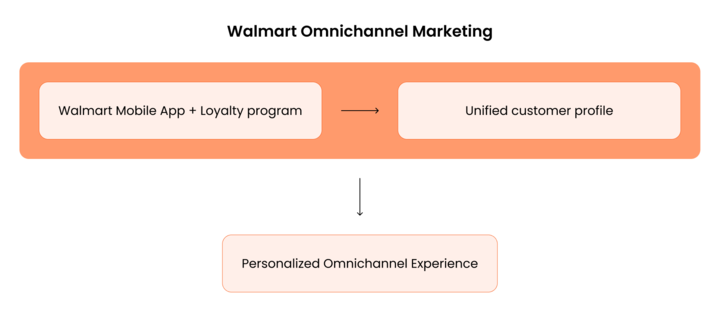
Key Components of Walmart’s Omnichannel Strategy:
- BOPIS & Curbside Pickup: Customers Buy Online and Pick up In-Store or curbside. With 90% of Americans living within 10 miles of a Walmart, this model drastically cuts delivery times and costs.
- Walmart Mobile App (Omnichannel Control Center):
- Walmart Pay for in-store contactless checkout
- Store Maps to locate items quickly
- Scan & Go to skip checkout lines
- Order Tracking and Personalized Lists across devices
- Walmart+ Loyalty Program: Combines online and in-store perks—free delivery, member fuel discounts, early access to deals, under one subscription.
- Data-Driven Personalization: Purchase history from both digital and physical touchpoints is used to personalize offers and recommendations in-app, via email, and in-store.
- Consistent Pricing & Inventory Visibility: Near real-time inventory sync between stores and websites prevents frustration from stock discrepancies and maintains price parity.
- Last-Mile Delivery & Fulfillment: Leverages store locations for same-day local delivery and offers white-label delivery for other retailers via Walmart GoLocal.
- Digital Tools for Associates: In-store employees use handheld devices to manage online orders, check stock, and support seamless cross-channel fulfillment.
Key Components of an Effective Omnichannel Marketing Experience
Omnichannel marketing is about delivering a unified, seamless experience wherever your customer interacts with your brand.
Here are the key components that make Omnichannel marketing a success:
- Integrated Data & Customer Data Platform (CDP)
- Consistent Brand Voice & Messaging
- Handoffs Between Channels
- Personalization and Automation at Scale
- Customer Journey Mapping
1. Integrated Data & Customer Data Platform (CDP)
A true omnichannel experience starts with data. You need to gather and unify customer information across every touchpoint, email, website, in-store, mobile, signup forms, and more.
A Customer Data Platform (CDP) helps centralize this data, giving your team a complete 360° view of the customer. This ensures that every interaction is informed, relevant, and personalized.
3 Best CDP tools for enterprises and ecommerce: Bloomreach, Salesforce, Segment (by Twilio)
Related Reading: 11 Best E-commerce Email Templates + Examples.
2. Consistent Brand Voice & Messaging
Whether your customer sees a Facebook ad, receives an email, or walks into your store, the experience should feel familiar.
Your brand voice and messaging must stay aligned across all touchpoints to build trust and consistency. This consistency builds trust and reinforces brand identity.
Top 3 Tips for consistent Branding:
- Have a master template for every digital touchpoint. For example, create templates for email campaigns, social media posts, SMS, and so on.
- Maintain your Brand tone across the channels.
- Ensure you have your brand element, like logo, in different sizes and as favicons to use them across your marketing materials.
3. Handoffs Between Channels
A hallmark of successful omnichannel marketing is the ability for customers to switch channels without friction.
For example, someone might browse on mobile, add a product to the cart on desktop, and complete the purchase in-store. All without repeating the actions or losing progress.
4. Personalization and Automation at Scale
Personalization is no longer a luxury; it’s expected. Use behavioral targeting to automate personalized emails and follow-ups based on individual actions.
When done at scale, this creates a hyper-relevant experience that improves conversions and customer loyalty.
Related Reading: Email Personalization – Strategies & Examples that Work.
Best tools for Omnichannel automation:
| Channels | Tools |
| Email, SMS, WhatsApp, in-app popups | Retainful |
| Email, SMS, push notifications | Omnisend |
| Data-driven personalized emails, SMS | Klaviyo |
| Email, social media, targeted ads, chats | Hubspot |
5. Customer Journey Mapping
Every customer takes a unique path to purchase. By mapping out the key stages in the marketing funnel, you can better understand their needs.
This allows you to create targeted campaigns for each stage. Most importantly, you can reach them on the channels they prefer.
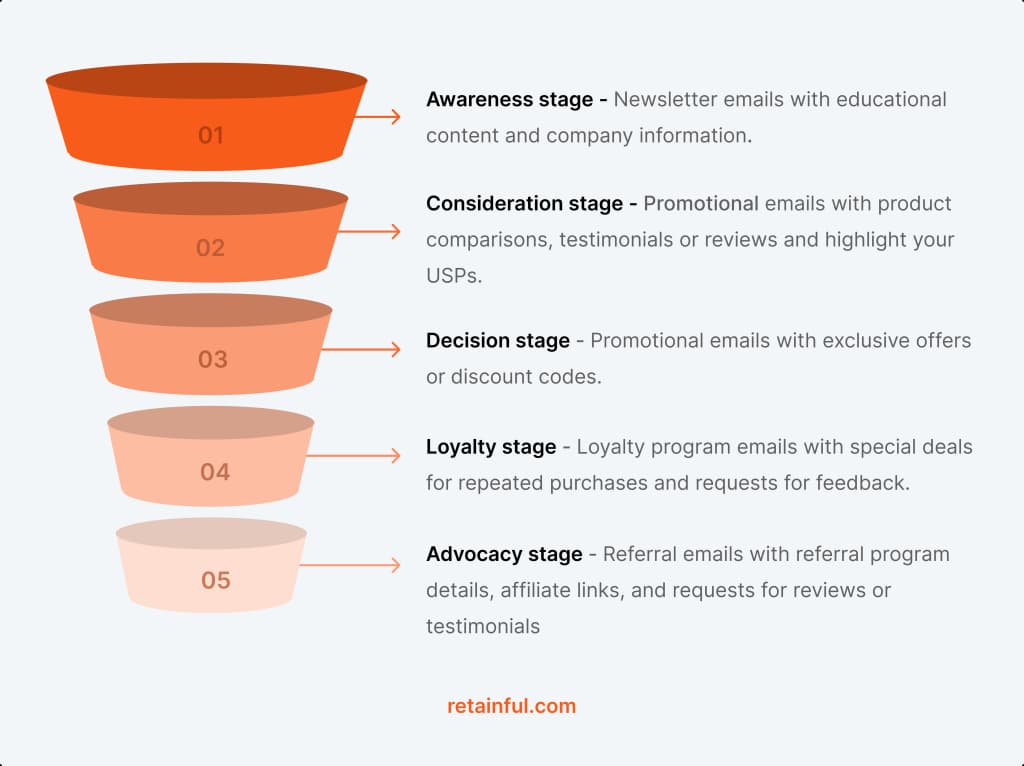
How to Build Your Own Omnichannel Marketing Ecosystem?
Nearly 87% of retailers believe an omnichannel marketing strategy is critical for their success. But it’s not a one-size-fits-all approach. It varies depending on the industry, your audience preferences, and the marketing channels you’ve chosen.
Here are the steps to implement Omnichannel marketing:
- Understand your customers deeply
- Audit your existing channels and touchpoints
- Map the customer journey (current & ideal)
- Integrate your data and Technology stack
- Develop consistent messaging and content strategy
- Start small, test, and iterate
1. Understand Your Customer Deeply
Start with data. Use analytics, surveys, customer interviews, and support feedback to understand them. The more you know, the better you can tailor their experience.
Segment your audience based on:
- Who they are – Demographic segmentation.
- What channels they prefer – Sign-up source, where they engage with your brand (emails, SMS, social media, ads, …)
- How they behave at different stages of the buying journey – Behavioral segmentation.
Related Reading: Email Segmentation: 12 Strategies + Examples.
2. Audit Your Existing Channels & Touchpoints
Take stock of your current marketing channels and identify where they fall short. This audit helps you spot gaps and opportunities.
- Are the channels connected? – To unify the data and interactions.
- Assess each channel’s performance? – Identify the pillar of your omnichannel marketing strategy and fix the inefficiencies in the channel.
- Are customers receiving a consistent experience across them? – Create an omnichannel experience.
3. Map the Customer Journey (Current & Ideal)
Visualize how customers interact with your brand today, from discovery to purchase and beyond. Then, design the ideal journey.
Use this to align your messaging, automate key interactions, and eliminate friction at each stage.
The ideal customer journey for e-commerce marketing through Omnichannel would be:
| Funnel Stage | Marketing Channels | Messaging |
| Awareness | SEO, Blog content, Social Media Ads, Influencer Marketing, Word of Mouth. | Highlight problems your product solves, share educational content, and introduce brand story. |
| Consideration | Email newsletters, Retargeting Ads, YouTube, Product Pages, Comparison blogs. | Showcase product features, benefits, testimonials, comparisons, and how-tos. |
| Conversions | Abandoned cart emails, SMS reminders, Website CTAs, Exit-Intent Popups. | Offer incentives (discount emails, free shipping), highlight urgency, simplify decision-making. |
| Retention | Post-purchase emails, Loyalty programs, SMS updates, Mobile App Notifications. | Send thank-you notes, order updates, loyalty rewards, and exclusive member perks. |
| Advocacy | Referral campaigns, Review requests, User-generated content, VIP Emails. | Encourage referrals, ask for reviews, share success stories. |
4. Integrate Your Data & Technology Stack
Use tools like a Customer Data Platform (CDP) or CRM to unify customer data across channels. This gives you a single customer view. Ensure your marketing, sales, and support tools work together seamlessly.
5. Develop Consistent Messaging & Content Strategy
Your brand should speak with one voice, whether it’s an Instagram ad, a support email, or an in-store conversation.
Align your messaging, visuals, and tone across all platforms to build trust and recognition.
6. Start Small, Test, and Iterate
You don’t need to launch everything at once. Begin with one or two high-impact channels and build from there.
Test your campaigns, track key metrics, and performance. Most importantly, improve based on real customer data and feedback.
Unify your marketing stack with Retainful’s Omnichannel feature to provide a personalized brand experience at every touchpoint.
Connect Your Marketing Channels For Unified Experience
Omnichannel marketing is not about how many marketing channels you use. It is about whether all the marketing channels you use are in sync to provide a unified brand experience. When your channels work in harmony, your brand becomes more than a product.
The Omnichannel marketing examples mentioned above have primary marketing channels that act as the center of their marketing strategy. Other channels are integrated with that primary channel to create a unified customer profile and personalized brand experience.
Also Read:
- 11 Best SMS Marketing Strategies for 2025
- 15 Website Popup Examples That Convert (+ Free Templates)
- 10 Best Customer Acquisition Strategies for 2025
Frequently Asked Questions
Unlike multichannel approaches, omnichannel ensures data and messaging are connected and personalized across every touchpoint.
Brands using strong omnichannel strategies see a 9.5% annual revenue growth and reduce cost per contact by about 7.5%.
Companies with robust omnichannel engagement retain 89% of their customers, compared to just 33% for weaker strategies.
Retail, ecommerce, finance, healthcare, and hospitality see the highest ROI from omnichannel strategies due to diverse customer touchpoints.
No, even small and mid-sized businesses can implement it by starting with just a few connected channels and growing gradually.

